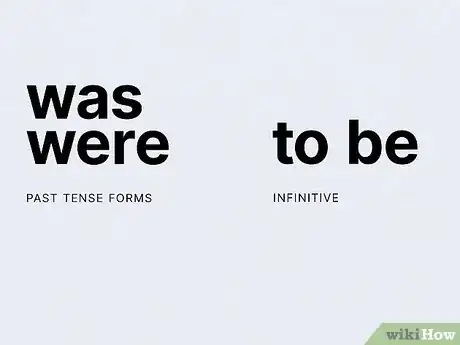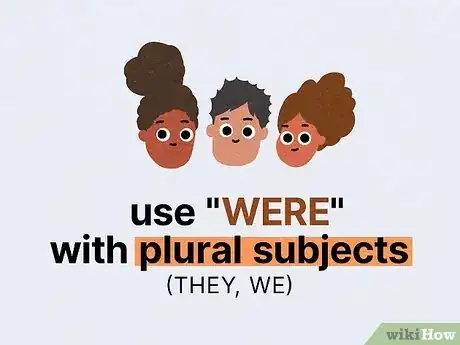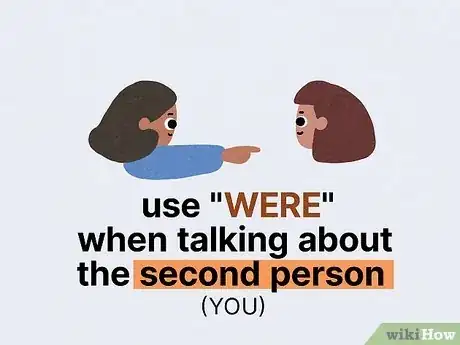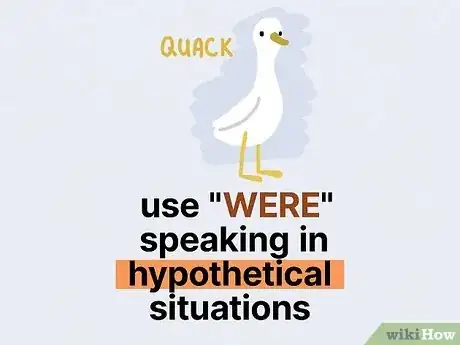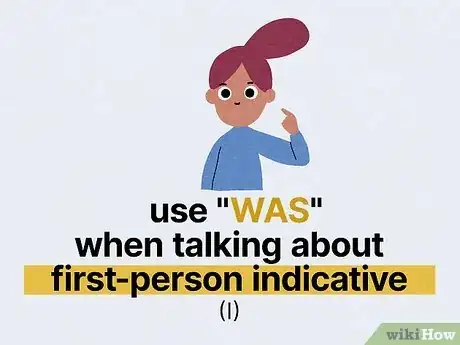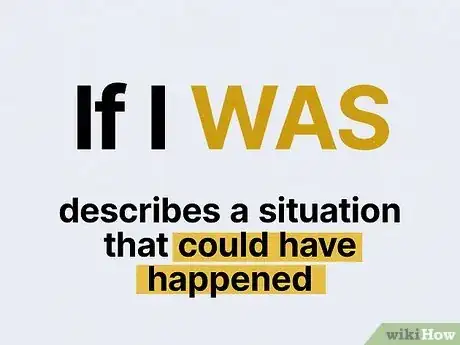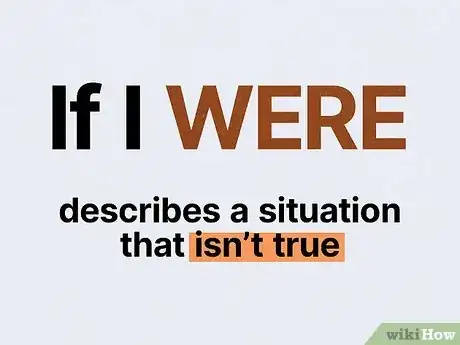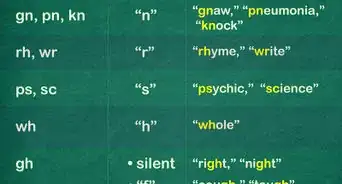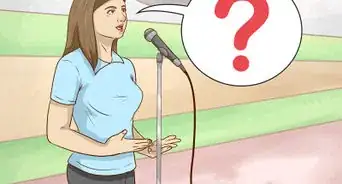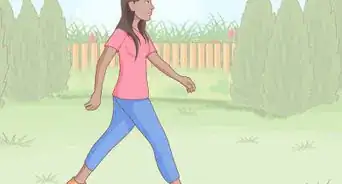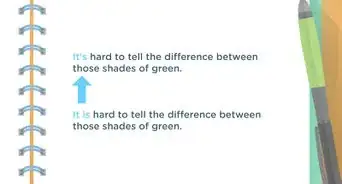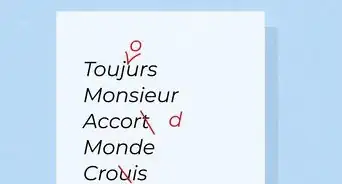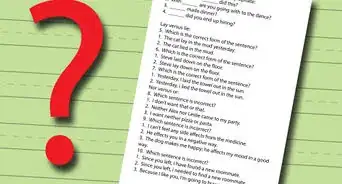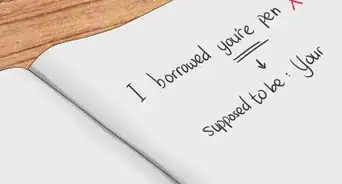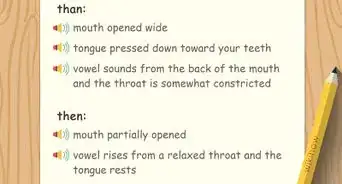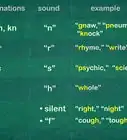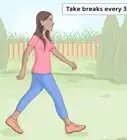This article was co-authored by wikiHow staff writer, Luke Smith, MFA. Luke Smith is a wikiHow Staff Writer. He's worked for literary agents, publishing houses, and with many authors, and his writing has been featured in a number of literary magazines. Now, Luke writes for the content team at wikiHow and hopes to help readers expand both their skillsets and the bounds of their curiosity. Luke earned his MFA from the University of Montana.
Learn more...
The words “was” and “were” are both past-tense conjugations of the word “to be,” meaning they describe how something was in the past. But it’s not always easy to decide when to use one word over the other. First, decide if you’re talking in the indicative or subjunctive mood. Then, decide if the subject of the action is singular or plural. We’ll help you sort out which mood is which, then give you a simple guide on when to use “was” versus “were,” with plenty of examples along the way.
Things You Should Know
- Use “was” to describe factual statements in the first or third-person singular.
- Use “were” to describe factual statements in the second person or first- and third-person plural.
- Use “were” to describe hypothetical statements or statements contrary to fact.
Steps
When to Use “Were”
-
1Use “were” with plural subjects. When your subject includes more than one person or thing, like “they” or “we,” use “were” to describe the action. For example, “They were at the store,” or “We were riding in the car.”[1]
-
2Use “were” when talking about the second person. The second person is any time you use the word “you” as the subject of the verb, like when you’re talking directly to somebody else. In this case, use “were” to describe the action.[2]
- “You were absent that day.”
- “I remember when you were little.”
-
3Use “were” when speaking in hypothetical situations. Any time you’re describing a hypothetical about the past or something that goes against fact, use “were.” This includes conditional phrases where the situation described is impossible, like, “If he were a duck, he’d probably quack.”[3]
- When you’re not talking about something that actually happened, you’re speaking in the “subjunctive mood.” This includes talking about things that might happen but which haven’t happened yet, things you wish would happen, or when you’re talking about things that are contrary to fact.[4]
- “I wish I were there when it happened.”
- “If you were Lady Gaga, you’d have a good voice.”
When to Use “Was”
-
1Use “was” when talking about the singular, first-person indicative. Singular first-person is any time you use the word “I” as a subject, like “I was at the store.” When you’re describing something that actually happened (indicative) to you (first person), go with “was.”
- “I was there when he fell.”
- “I was eating ice cream.”
-
2Use “was” to describe a situation that could have happened. Here’s where things can get confusing. When a hypothetical or conditional statement (a statement using the word “if”) is possible or could be true, use “was” to describe it.[5] However, stick to “were” if the situation is impossible.
- “If I was wrong, I’ll eat my hat.” In this sentence, the speaker is admitting that the hypothetical situation (being wrong) could in fact be true (as opposed to an impossible hypothetical), and so the speaker uses “was.”
”If I was” vs. “If I were”
-
1“If I was” describes a situation that could have happened. The situation described after this phrase is either true, or it might be true, and so we use “was.” [6]
- “I’m sorry if I was wrong.”
- “If she wasn’t busy, she could go on the trip.”
-
2“If I were” is used when describing a situation that isn’t true. These situations can never happen and call for the subjunctive mood, so we use “were.”[7]
- “If I were incorrect, I’d apologize.”
- “If I were a fish, I’d breathe underwater.”
”There was” vs. “There were”
-
1Use “there was” to describe single objects. When the subject described in the sentence is singular, we use “was.”[8]
- “There was a dog in the tree.”
- “When I woke up, I realized there was no blanket on the bed.”
-
2Use “there were” to describe plural objects. When the subject described in the sentence is plural, we use “were.”[9]
- “There were dogs in the tree.”
- “When I woke up, I realized there were no pillows on the bed.”
Tip
- Don’t sweat the grammar too much! Unless your teacher or employer indicates that they want you to use the correct form of the past tense “to be,” you probably shouldn’t get too hung up on it. It can be handy to know, but language rules are always changing, and even now the rules on “was” versus “were” are becoming looser. Plenty of notable authors mix them up or use them in ways contrary to grammar rules.[10]
- Looking for homework help or textbook rentals? Check out our coupon site for Chegg.
References
- ↑ https://www.grammar.com/if_i_was_vs._if_i_were
- ↑ https://www.merriam-webster.com/dictionary/were
- ↑ https://www.grammar.com/if_i_was_vs._if_i_were
- ↑ https://web.mit.edu/course/21/21.guide/m-indica.htm
- ↑ https://www.grammar.com/if_i_was_vs._if_i_were
- ↑ https://www.grammar.com/if_i_was_vs._if_i_were
- ↑ https://www.grammar.com/if_i_was_vs._if_i_were
- ↑ https://strategiesforparents.com/there-were-or-there-was-differences-in-context-and-use/
- ↑ https://strategiesforparents.com/there-were-or-there-was-differences-in-context-and-use/
